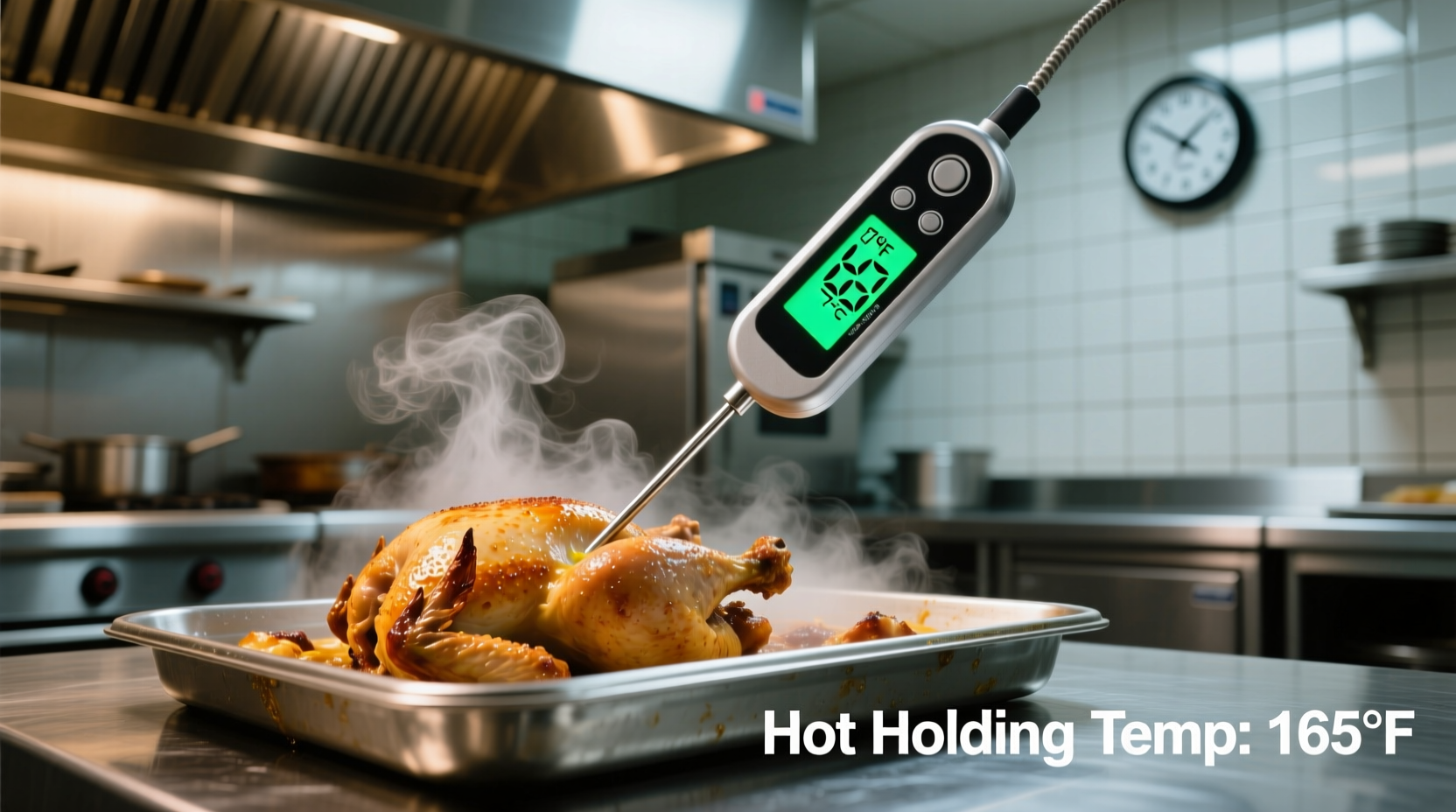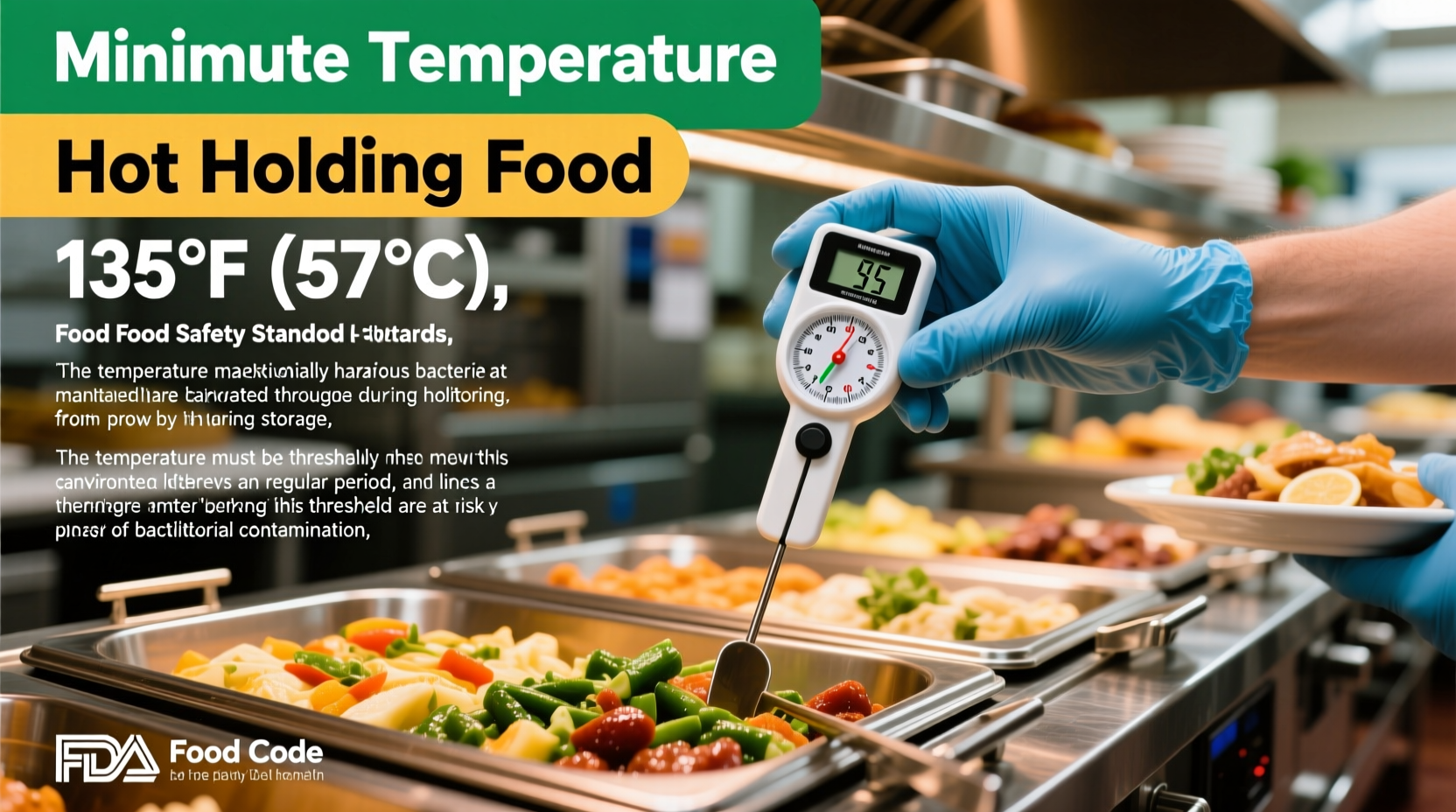Understanding and maintaining proper hot holding temperatures isn't just regulatory compliance—it's your first line of defense against foodborne illness outbreaks that could shutter your business and endanger customers. Whether you're a restaurant manager, caterer, or home cook hosting large gatherings, getting this temperature right protects both public health and your professional reputation.
The Science Behind the 135°F Safety Threshold
Food safety professionals determined 135°F as the critical hot holding minimum through decades of microbiological research. Below this temperature, pathogens like Salmonella, E. coli, and Staphylococcus aureus enter their rapid growth phase in what's known as the temperature danger zone (41°F–135°F). At 135°F, bacterial reproduction effectively stops, preventing the 10-fold increase in pathogen count that occurs every 20 minutes within the danger zone.
Temperature monitoring isn't optional—it's a non-negotiable food safety practice. The FDA Food Code specifies that potentially hazardous foods must maintain 135°F or higher from the moment they're cooked until served. This standard applies to all cooked meat, poultry, seafood, eggs, dairy products, cooked vegetables, and other TCS (Time/Temperature Control for Safety) foods.
| Temperature Range | Bacterial Growth Rate | Food Safety Status |
|---|---|---|
| <41°F | Slowed significantly | Safe for cold holding |
| 41°F–135°F | Exponential growth (doubles every 20 min) | Danger Zone - Unsafe |
| >135°F | Stopped | Safe for hot holding |
| >165°F | Killed rapidly | Safe for cooking |
Regulatory Requirements Across Different Regions
While the FDA Food Code sets the national standard in the United States, local health departments may implement stricter requirements. Most states have adopted the 135°F minimum, but some jurisdictions still operate under older guidelines specifying 140°F. Always verify with your local health authority, as they have final enforcement authority.
The evolution of hot holding standards reflects improved scientific understanding:
- Pre-2005: 140°F minimum was standard across most US jurisdictions
- 2005: FDA Food Code reduced minimum to 135°F based on new research
- 2013: Most states completed transition to 135°F standard
- Present: 135°F is nearly universal in US food service regulations
Internationally, standards vary significantly:
- Canada: 140°F (60°C) minimum for hot holding
- European Union: 140°F (63°C) for most prepared foods
- Australia: 140°F (60°C) for continuous hot holding

Practical Implementation in Food Service Operations
Knowing the minimum temperature is only half the battle—consistent implementation protects your customers. Professional kitchens use these evidence-based practices:
Temperature Monitoring Protocol
Check temperatures every four hours using a properly calibrated thermometer. Insert the probe into the thickest part of the food, avoiding contact with the container. Document all readings in a temperature log—this creates your legal record if questions arise. Digital probe thermometers with alarm functions provide real-time monitoring for critical holding situations.
Equipment Selection Guidelines
Not all warming equipment maintains safe temperatures equally. Steam tables require regular water level checks, while dry heat units like warming ovens need precise thermostat calibration. For buffet service, use chafing dishes with sufficient fuel cans (typically 2-4 per pan depending on size) and monitor temperatures hourly. Remember that covering food reduces heat loss by up to 30%, helping maintain safe temperatures with less energy.
Special Considerations and Exceptions
Certain situations require modified approaches while still maintaining safety:
- Mobile food operations: Use insulated containers verified to maintain 135°F+ for 4+ hours
- Self-service areas: Implement temperature monitoring every 30 minutes with visible indicators
- Extended holding: For service beyond 4 hours, implement a documented time-based holding procedure
- High-risk populations: Facilities serving elderly, children, or immunocompromised individuals may choose stricter standards (140°F+)
Troubleshooting Common Hot Holding Problems
Even experienced food service professionals encounter temperature challenges. Here's how to address frequent issues:
Temperature Fluctuations During Service
If temperatures dip below 135°F, immediately discard affected food or rapidly reheat to 165°F within 2 hours. To prevent recurrence, increase the number of fuel cans in chafing dishes, add lids between customer servings, or reduce the quantity of food in each container (shallower layers heat more evenly).
Equipment Calibration Issues
Verify equipment thermostats monthly using a separate calibrated thermometer. Many operators don't realize that built-in equipment thermometers can drift 5°F–10°F from actual temperatures. Ice bath (32°F) and boiling water (212°F) tests provide quick calibration checks.
Staff Training Gaps
Implement a "two-point verification" system where staff check temperatures at different locations in each container. Create visual indicators like color-changing labels that show when temperatures fall into the danger zone. Document all training sessions—the FDA requires proof of food safety knowledge for all personnel handling TCS foods.
Consequences of Improper Hot Holding
Violating hot holding requirements carries significant risks beyond potential illness. Health inspectors routinely check holding temperatures during inspections—a single reading below 135°F typically results in a priority violation requiring immediate correction. Multiple violations can trigger fines up to $1,000 per offense in many jurisdictions. In outbreak investigations, improper temperature control is the most commonly cited factor, potentially leading to temporary closure, lawsuits, and permanent reputation damage.
Best Practices for Temperature Documentation
Maintain a temperature log with these critical elements:
- Food item name
- Time of measurement
- Recorded temperature
- Staff member signature
- Corrective actions taken (if needed)
Digital logging systems with automatic time-stamping reduce documentation errors and provide searchable records during inspections. Retain logs for minimum 90 days—most health departments require access to recent temperature records during inspections.











 浙公网安备
33010002000092号
浙公网安备
33010002000092号 浙B2-20120091-4
浙B2-20120091-4